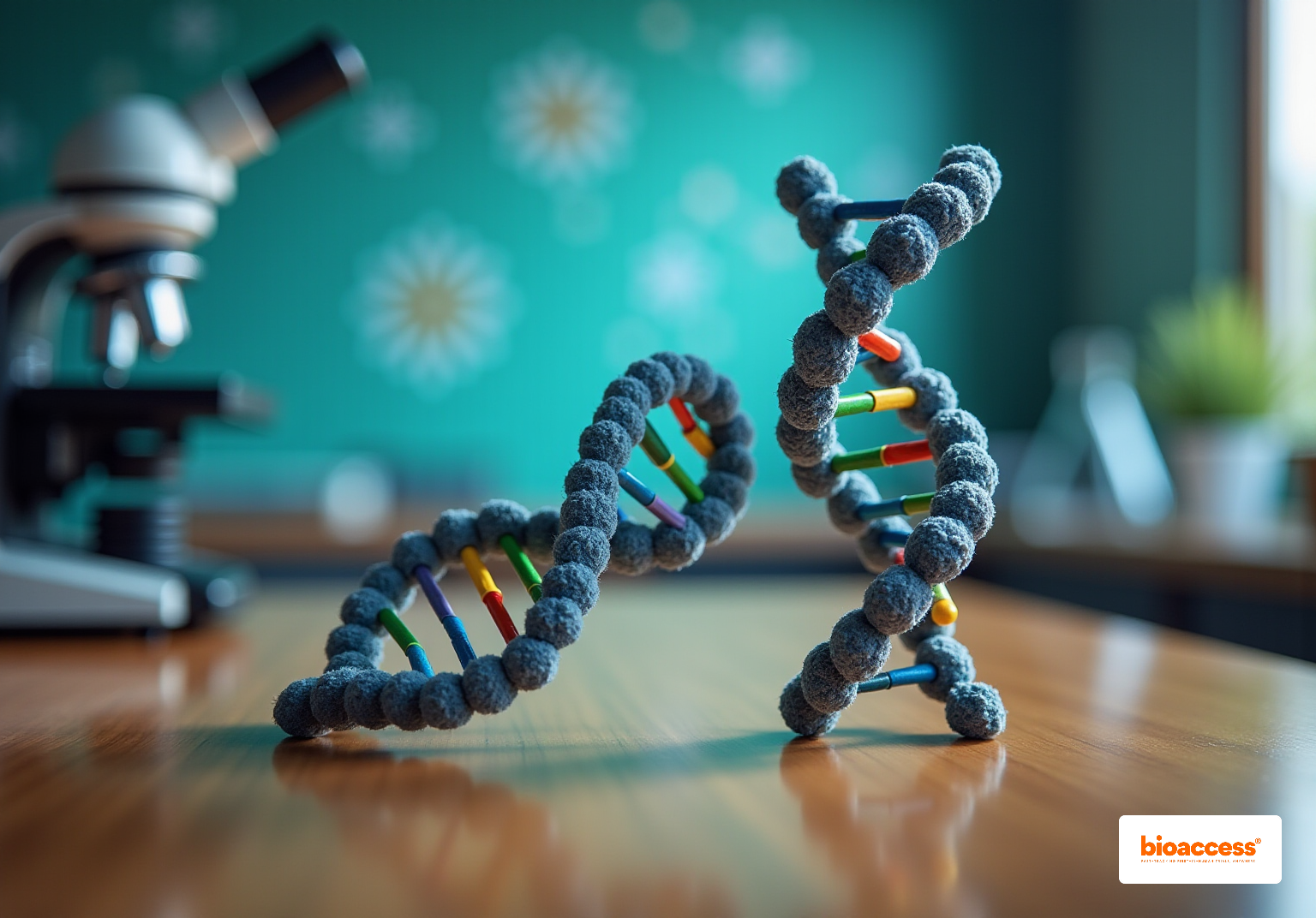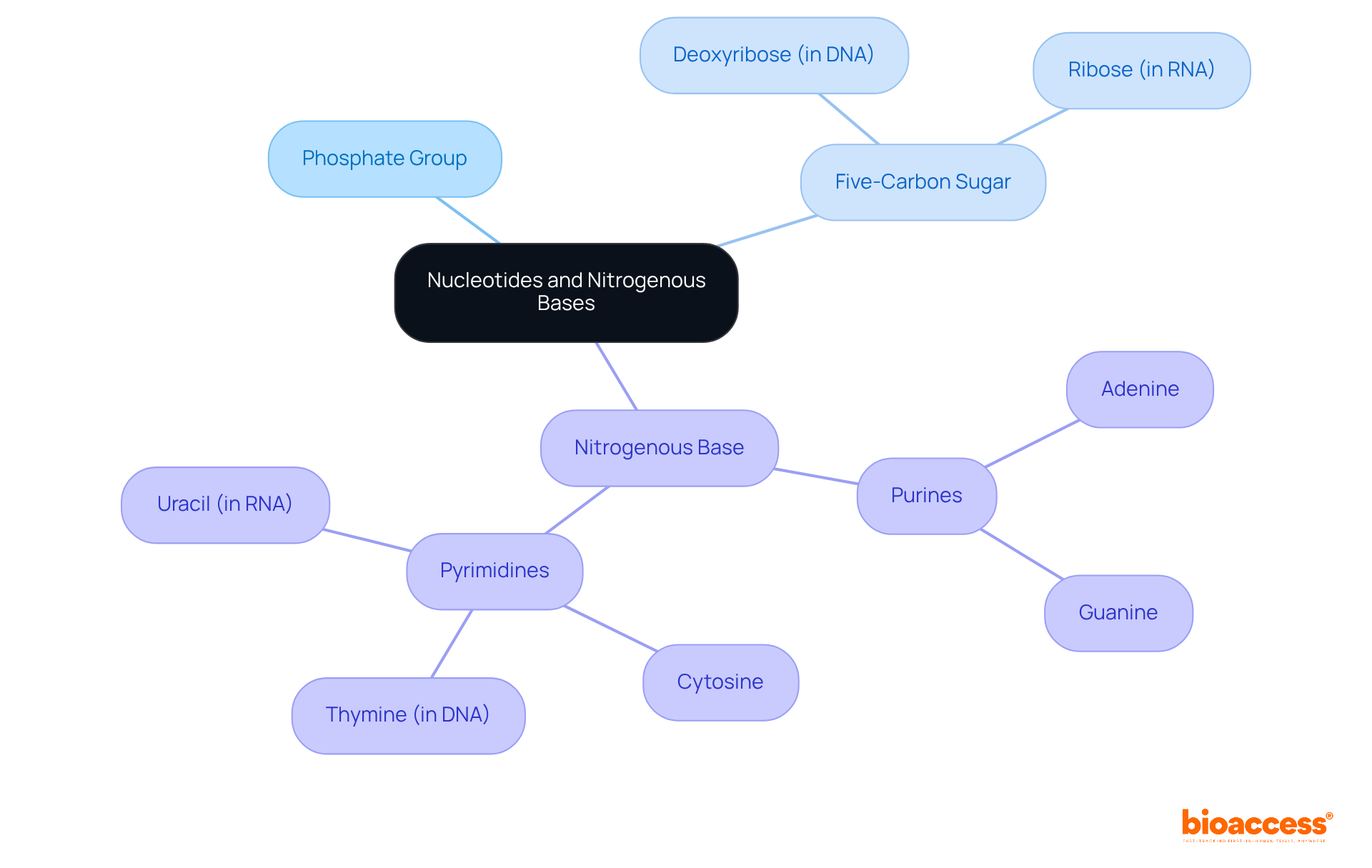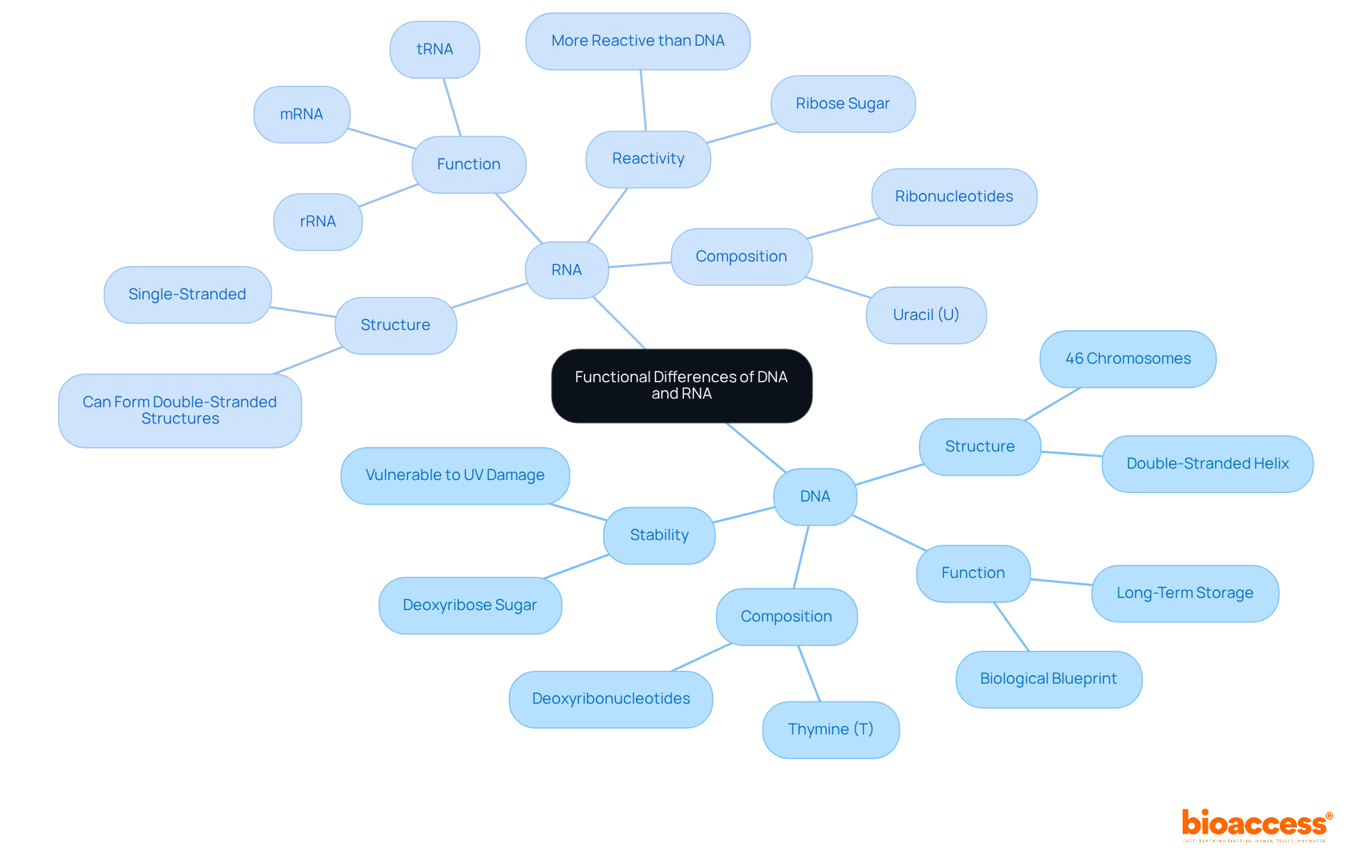


DNA and RNA are fundamentally composed of nucleotides, which include a phosphate group, a sugar—deoxyribose in DNA and ribose in RNA—and a nitrogenous base. The article elucidates that the specific arrangement and pairing of these nucleotides are vital for their functions in storing and transmitting genetic information. This highlights the structural differences that distinctly define their respective roles in biological processes.
Understanding the intricate world of genetics begins with a closer look at the fundamental building blocks of life: DNA and RNA. These vital nucleic acids not only store and transmit hereditary information but also play critical roles in cellular processes essential for growth and function. By delving into their composition—nucleotides, sugars, and nitrogenous bases—readers can uncover the secrets behind the structural differences that dictate their unique functions. What do these differences reveal about the roles of DNA and RNA in the grand tapestry of biological systems?
DNA (deoxyribonucleic acid) and RNA (ribonucleic acid) are crucial biomolecules classified as nucleic acids, serving essential roles in the storage and transfer of hereditary information. Structurally, DNA is predominantly double-stranded, forming a stable helical structure, while RNA is typically single-stranded, which provides greater flexibility and reactivity. The primary function of DNA is to store the biological blueprints vital for the growth and operation of living organisms, whereas RNA serves as a messenger, transmitting instructions from DNA to regulate protein production. This intricate process is vital for cellular growth and the overall functioning of biological systems.
To understand what DNA and RNA are composed of, it's important to note that they consist of nucleotides, which include:
The linear arrangement of these nucleotides is essential for their functionality in biological processes, enabling the effective storage, transfer, and expression of hereditary information. Understanding these structural foundations is imperative for grasping how hereditary information is processed and utilized within biological systems.

The question of what are DNA and RNA composed of can be answered by stating that both are composed of nucleotides, the fundamental units of these nucleic acids. Each nucleotide comprises three components:
The nitrogenous bases are categorized into two groups:
The arrangement of these nucleotides encodes hereditary information, and the specific pairing of bases is essential for the stability and function of these molecules. For instance, adenine pairs with thymine in DNA through two hydrogen bonds, while in RNA, adenine pairs with uracil. Importantly, guanine pairs with cytosine through three hydrogen bonds, further stabilizing the DNA structure.
Recent studies have highlighted the significance of nucleotide metabolism, revealing that more than 20,000 proteins have been identified in humans, yet the functions of fewer than half are understood. This statistic underscores the importance of ongoing research into the roles of nitrogenous bases in genetic processes.
Moreover, the structural distinctions between deoxyribose and ribose sugars are essential; ribose includes a hydroxyl group on the second carbon, whereas deoxyribose possesses a hydrogen atom, which affects the role of these nucleic compounds. Furthermore, the formation of phosphodiester bonds between nucleotides is essential for creating the 5′ to 3′ directionality of nucleic acid strands, a fundamental aspect of their biological roles.

The structural distinctions between DNA and RNA and what they are composed of are pivotal in defining their functional roles within the cell. DNA's double-stranded helix not only offers exceptional stability but also serves as an ideal medium for the long-term preservation of hereditary information, effectively functioning as a biological blueprint. Notably, DNA is vulnerable to damage by ultraviolet light, which underscores its stability challenges. The human genome comprises 46 chromosomes, each a lengthy DNA molecule measuring 2.3 meters in length, demonstrating the structural importance of DNA in information storage.
In contrast, RNA's single-stranded structure boosts its flexibility, enabling it to perform various functions:
Additionally, RNA can form double-stranded structures during translation, further highlighting its functional adaptability. The substitution of uracil for thymine in RNA contributes to its increased reactivity and adaptability in various cellular processes. These functional variances highlight the critical roles that nucleic acids play in sustaining life and regulating biological functions, leading to the question of what are DNA and RNA composed of.
Recent studies indicate that while DNA is more stable due to its deoxyribose sugar, which lacks an oxygen-containing hydroxyl group, RNA's ribose sugar, with an additional hydroxyl group, makes it more reactive and less stable under alkaline conditions. This inherent instability allows RNA to rapidly respond to cellular needs, underscoring its essential role in gene expression and regulation. Furthermore, the antiparallel arrangement of DNA strands is crucial for accurate replication and proofreading, emphasizing the complexity of DNA's structural properties.

DNA and RNA are fundamental molecules that serve critical roles in the storage, transmission, and expression of genetic information. Understanding their composition and structural distinctions is essential for appreciating how these nucleic acids function within biological systems. DNA, with its double-stranded helical structure, provides stability and serves as a long-term repository of genetic blueprints, while RNA's single-stranded nature allows for versatility and rapid response to cellular needs.
This article delves into the key components of DNA and RNA, highlighting the significance of nucleotides, which consist of a sugar, phosphate group, and nitrogenous base. The arrangement of these nucleotides encodes hereditary information, with purines and pyrimidines playing vital roles in base pairing and molecular stability. Furthermore, the differences in sugar composition between DNA and RNA illustrate how structure influences function, affecting everything from stability to reactivity and adaptability in cellular processes.
Ultimately, the exploration of DNA and RNA composition emphasizes the intricate relationship between structure and function in biological systems. Understanding these nucleic acids is not only crucial for grasping the mechanisms of heredity and gene expression but also for appreciating the ongoing research that seeks to unravel the complexities of life at a molecular level. Embracing this knowledge can inspire further inquiry into the roles of nucleic acids, paving the way for advancements in genetics, biotechnology, and medicine.
What are DNA and RNA?
DNA (deoxyribonucleic acid) and RNA (ribonucleic acid) are crucial biomolecules classified as nucleic acids, essential for storing and transferring hereditary information.
What is the structural difference between DNA and RNA?
DNA is predominantly double-stranded, forming a stable helical structure, while RNA is typically single-stranded, allowing for greater flexibility and reactivity.
What is the primary function of DNA?
The primary function of DNA is to store the biological blueprints vital for the growth and operation of living organisms.
What role does RNA play in biological systems?
RNA serves as a messenger, transmitting instructions from DNA to regulate protein production, which is vital for cellular growth and the overall functioning of biological systems.
What are the components of DNA and RNA?
Both DNA and RNA consist of nucleotides, which include a sugar, a phosphate group, and a nitrogenous base.
Why is the linear arrangement of nucleotides important?
The linear arrangement of nucleotides is essential for the functionality of DNA and RNA in biological processes, enabling effective storage, transfer, and expression of hereditary information.